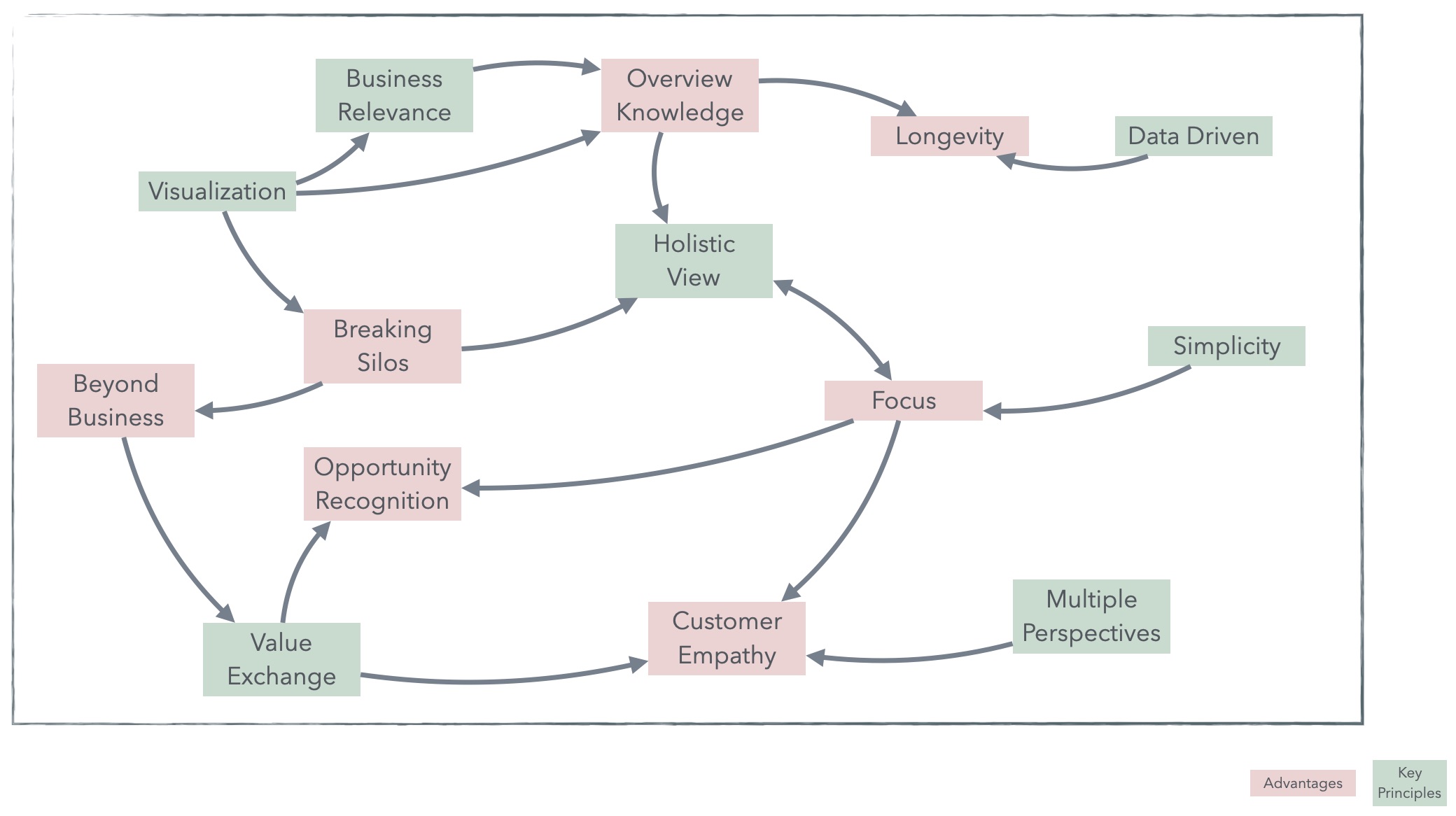More than just visualization
Alignment diagrams are more than just visually appealing illustrations—they are powerful tools that help businesses align themselves more effectively with their customers. They bring structure to complex processes, create clarity, and support informed decision-making. A well-crafted alignment diagram doesn’t happen by chance—it follows clear principles that maximize its impact. The key guidelines below highlight what makes alignment diagrams truly effective.
The Key Principles of Alignment Diagrams

1. Keeping the Big Picture in Mind
Alignment diagrams are not about product research – they capture how people act, think, and feel within a given context. Instead of focusing solely on individual features or customer experiences, they provide a comprehensive perspective.
2. Incorporating Multiple Perspectives
A strong alignment diagram combines different types of information. On the customer side, this may include actions, emotions, goals, or pain points. On the business side, it often involves processes, metrics, or key stakeholders. By integrating these perspectives, a more holistic understanding emerges.
3. Making Value Flows Visible
These diagrams illustrate where and how value is created – whether for customers or the business. They highlight areas that function smoothly and those with room for improvement.
4. Visualizing Complex Information
Long reports or lists? Not ideal. A well-designed visual representation conveys key information more clearly and efficiently. Alignment diagrams enhance clarity and help steer discussions in a meaningful direction.
5. Simplicity Matters
A good diagram should require little or no explanation. Viewers should be able to navigate it effortlessly. Less is often more – the most essential information must be presented in a straightforward and digestible way.
6. Ensuring Business Relevance
A diagram is only valuable if it addresses the company’s real challenges and goals. It should always be strategically aligned, avoiding unnecessary details that do not contribute to business success.
7. Basing Decisions on Real Data
Alignment diagrams are not built on assumptions but on solid research. Interviews, observations, and qualitative or quantitative methods ensure an accurate and realistic representation.
Why Alignment Diagrams Are Worth Using
Alignment diagrams are not a magic solution that instantly solves problems. However, they provide a strong foundation for meaningful conversations, strategic planning, and better decision-making.
1. Enhancing Customer Empathy
Many companies know surprisingly little about their customers’ actual experiences. Alignment diagrams change this – not just in theory, but in practice. They promote a shift from an inside-out to an outside-in perspective, helping companies see the world through their customers’ eyes.
2. Maintaining a Clear Overview
These diagrams serve as a common reference point, helping teams stay aligned with their objectives. They prevent decisions from drifting too far from initial goals. Additionally, they act as stable knowledge repositories, preserving the overall picture even amid personnel changes and providing new team members with a quick onboarding process.
3. Breaking Down Silos
Customers experience products and services as a whole – not as separate departments. Alignment diagrams highlight where teams intersect and encourage cross-functional collaboration.
4. Creating Focus
Many companies struggle with too many competing priorities. These diagrams help focus on what truly matters by aligning internal and external processes.
5. Identifying Opportunities
By making value flows visible, alignment diagrams reveal untapped potential. This opens up new possibilities for improvement and innovation.
6. Long-Term Relevance
Alignment diagrams are based on fundamental human needs, making them relevant for years. Companies can repeatedly use them as a guiding framework.
7. Applicable Beyond Business
These diagrams are not just valuable for companies. They can also be used in social projects, education, or environmental initiatives to optimize processes and focus on the right priorities.
Conclusion
Alignment diagrams are more than just visual aids – they help businesses achieve clarity, improve strategic decision-making, and ultimately create more value for their customers. By understanding and applying these principles, organizations can strengthen and advance their strategic alignment in a sustainable way.